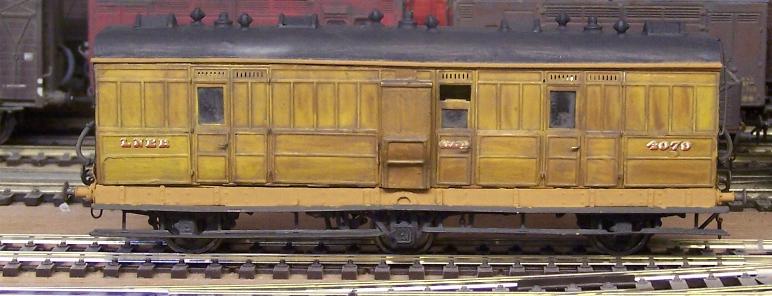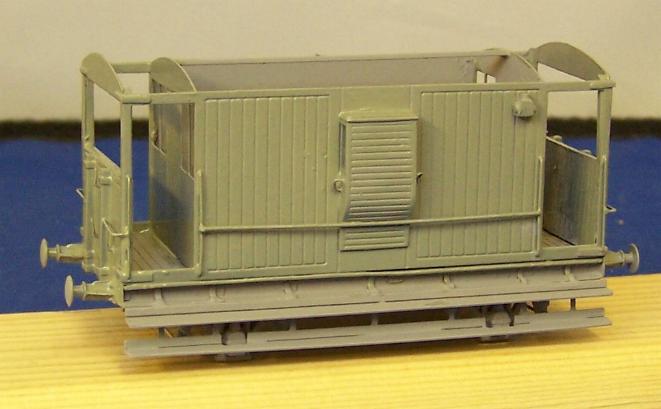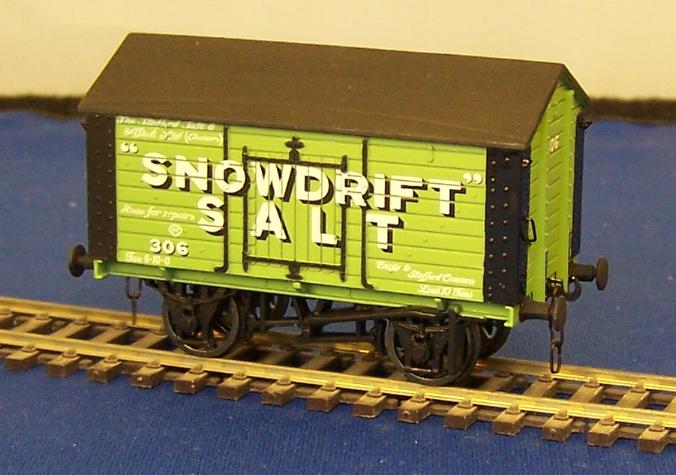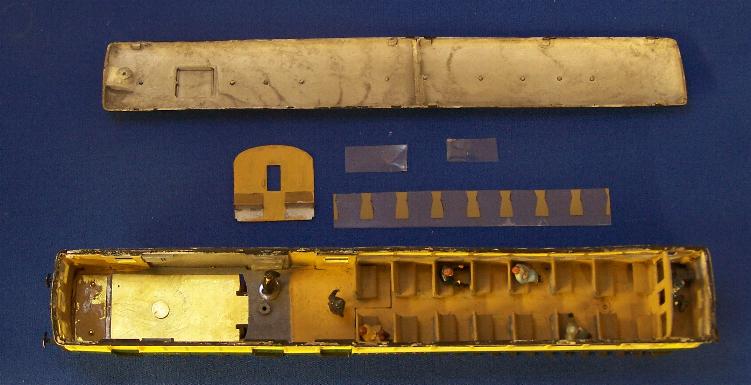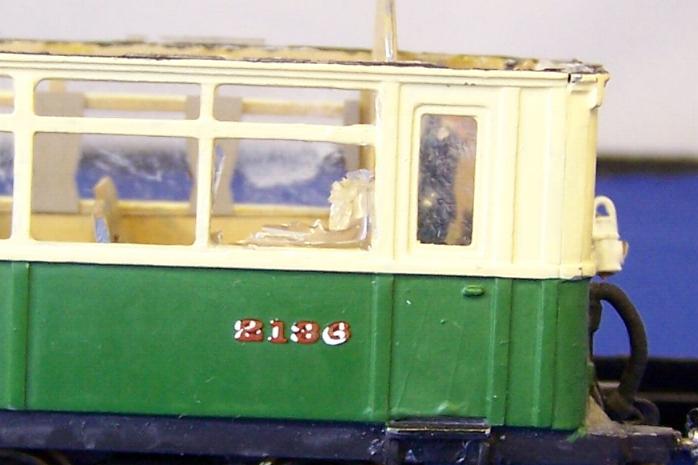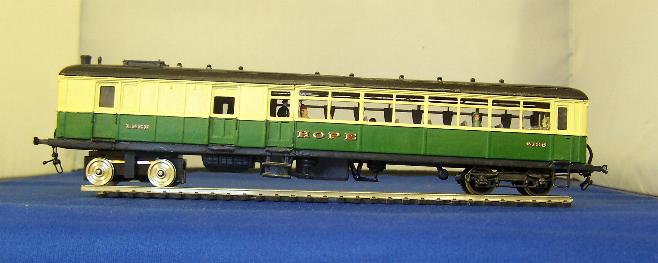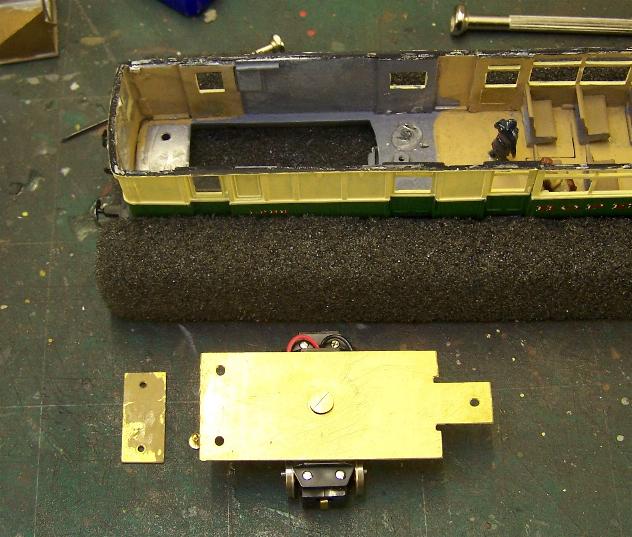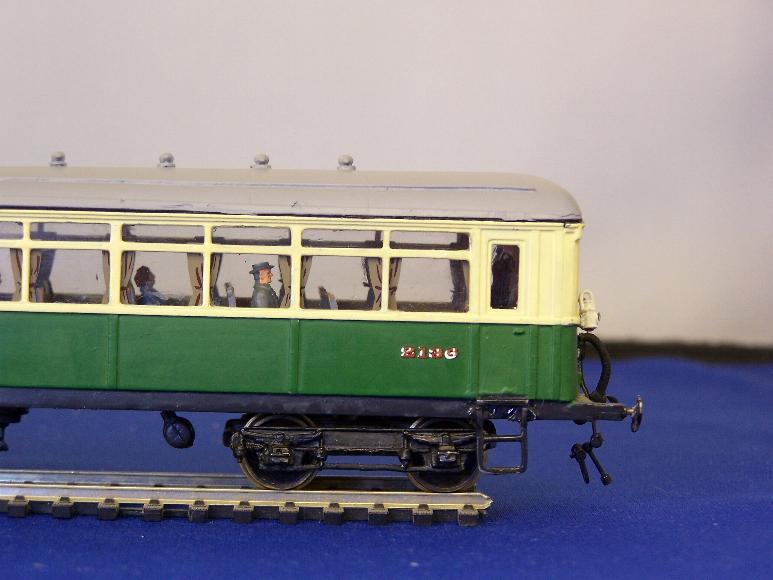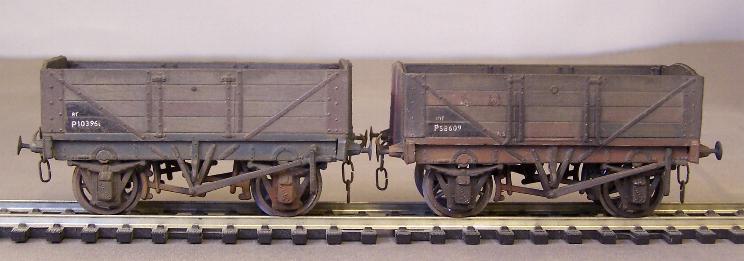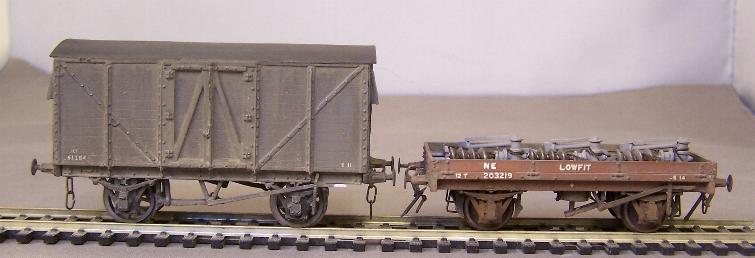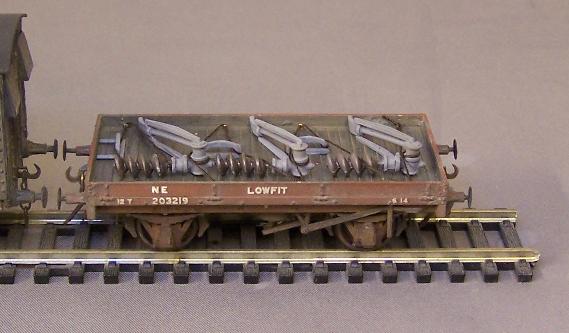Right, a bit of a retrospective this evening. I've been fiddling on with a few things, mainly weathering and nothing really worth posting. One of the items I finished off, though, was a container flat for the fish train for
Thurston. Not desperately momentous except that it was the last item of rolling stock for that train - the train is now finished. Again, not in the sense that any model which is used is finished as there will always be maintenance and repairs or improvements to make. In this case it's quite simply that the stock box for fish vans is full, as (almost) is the road in the fiddle yard, so it's unlikely I shall build any more for it. It's been developing since about 2005 along with the rest of the stock for the layout and will also work on the replacement which the Ely club have already started building.
So here is a stroll along the train parked in and almost filling my test track.

The train engine is a Bachmann K3. Bought from the well known string bound parcel emporium when they first came out, renumbered to an Ipswich engine which features often in Dr Ian C Allen's East Anglian books, detailed and weathered. It ran mechanically unaltered for a long time, but the last set of additions to the train, the containers, required the addition of a fair amount of lead along the boiler either side of the motor and in the cab roof. It handles the 21 + brake which now makes up the consist with no problem.
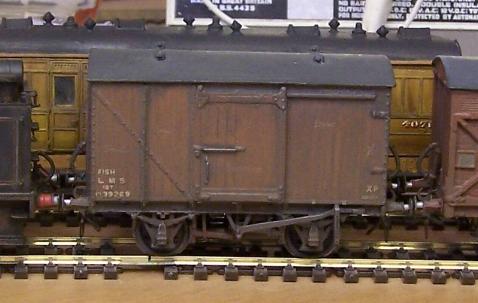
The leading van - cast, like all the first few vehicles - is an LMS D1664 van. This is an ABS kit. As the layout is set in the early BR period (1947-55) this has not yet been repainted into BR livery, though it has the M prefix to the number. LMS vans were quite common in the East Anglian ports from very early in BR days.
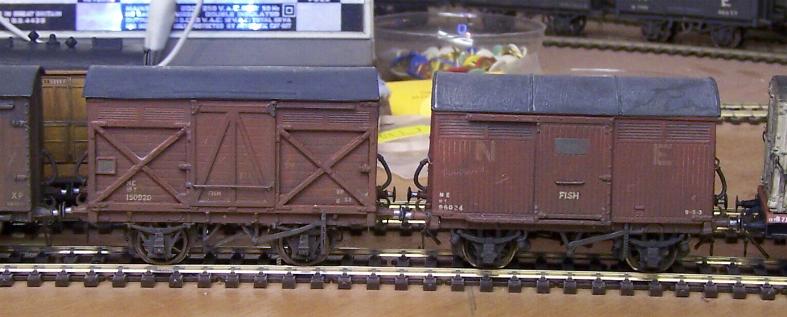
The next pair are at the very end of their working lives - an ABS LNER outside framed van and an ex-North Eastern F6 van from 51L. Penny numbers of these made it after the war and the ABS one would most likely have been converted to general use by now. I have a thing for outside framed vans, though, and the GE kept stock years after anywhere else would have scrapped it.... Neither has or will receive BR livery or lettering. I was pleased with the effect I got on the 51L van with the older lettering showing through. It's slightly small but under normal lighting doesn't show up as well as on the photo so it's less obvious.

Next the first set of container flats I put together. I acquired some Bachmann Conflat As and I've also built a pair of David Geen GW ones, an H6 and an H7. These are whitemetal so they can go fairly well forward in the train without fear of being pulled off by the following wagons. The picture shows how similar these vehicles were; Bachmann BR version first, followed by the H6 (9'wheelbase as opposed to 10') and then the H7. The containers are Bachmann repainted and renumbered using the pack available from Cambridge Custom Transfers.
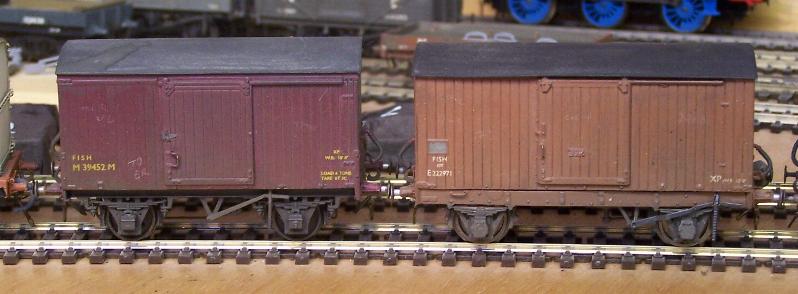
Immediately after the containers an LMS d 2059 fish van (Parkside) - there are two of these in the train. Then the LNER 12' WB fish van. This is very much the staple of the consist and was where it all started. I bought a job lot of 5 off Ebay and repainted and detailed them. The kit is available from Parkside, but I think these are Cotswold as they have whitemetal solebars. There are differences between them - different shades of brown, patch painting, one still in LNER livery - but they are intended to give a certain amount of uniformity to the whole train.
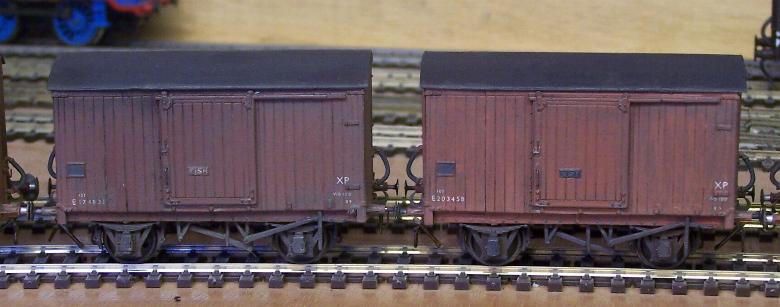
In among the 12' wheelbase vans are a couple of the older 10' ones. These are cut down from the longer Parkside kit although they will be available from Bachmann sometime in the future.

The LMS 6 wheeler from Roger Chivers was just irresistible when it came out and gives some visual variety while not being massively different from the LNER vans which surround it. The other D2059 is marshalled next to it.
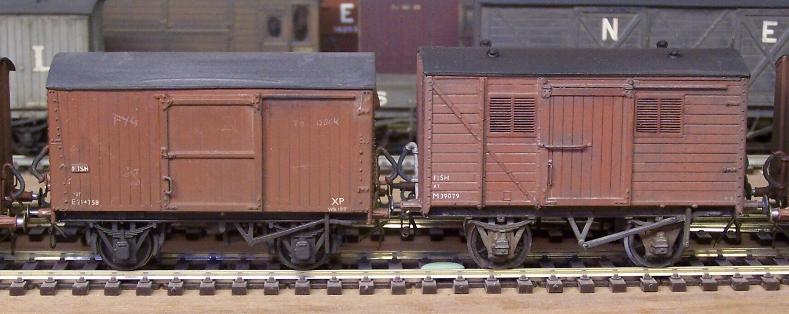
Getting towards the rear (I didn't photograph all the duplicates) there is an LNER corrugated end van. This is the Parkside kit and is derived from a photograph in the Cheona LNER wagons book showing one in Darlington Works with FISH plates fitted. The less usual position of the plate is also from that photo. Next to it a Cambrian LMS d1885 van, cracking kit of a distinctive prototype. It looks quite different with the side vents, short wheelbase and white upstands indicating a through piped vehicle.
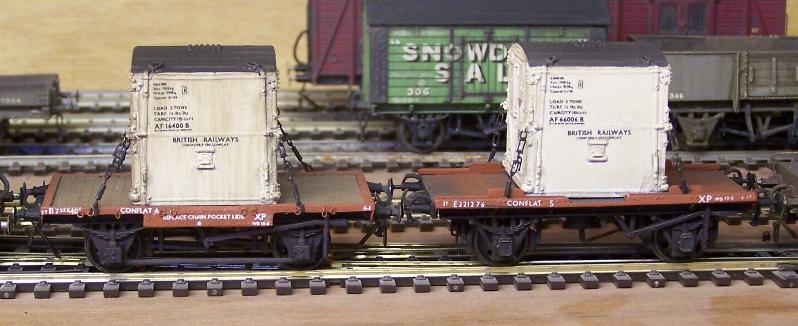
Two more containers, as above, one on a Bachmann Conflat A and the other a Parkside Conflat S. The S should have the steel chocks in place to hold the container. The chains are made from Roxey shackles, fine chain and a length of Evergreen rod for the shock absorber.

Lastly the Dapol brake van with Monty's (I think) guard. A full set of lamps - he can be confident he won't be looped anywhere.
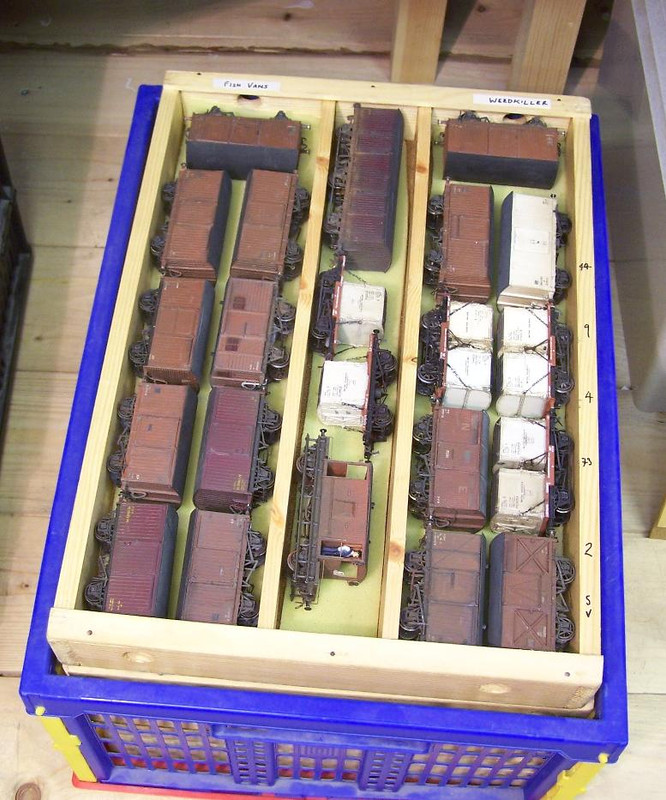
... and it all fits nicely into the box ready for Nottingham in March.
A couple more little jobs which might be of interest; I seem to have acquired a number of 4 wheel Passenger Brakes, largely as parts of job lots. I have three in teak livery and so thought it would be nice to line one. Makes an already attractive vehicle really eyecatching. This one is a D & S kit.
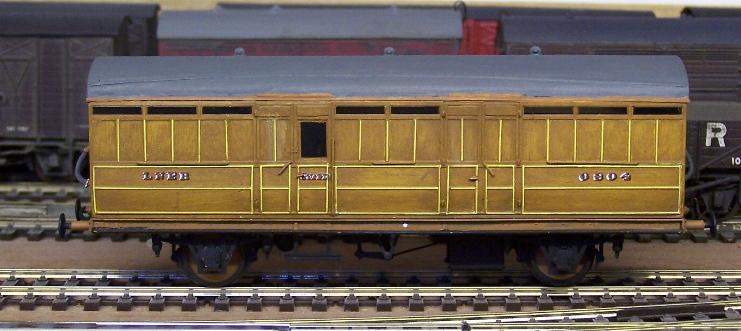
This was one of the very first etched vehicles I built, also from D & S and shows me how far I've come with kit construction in that time. For these purposes I was more concerned by the fact that both solebar and cornice were black and so both have been corrected with Humbrol 62. There are some markings to go on the solebar and then a varnish and light weathering to blend them in.
